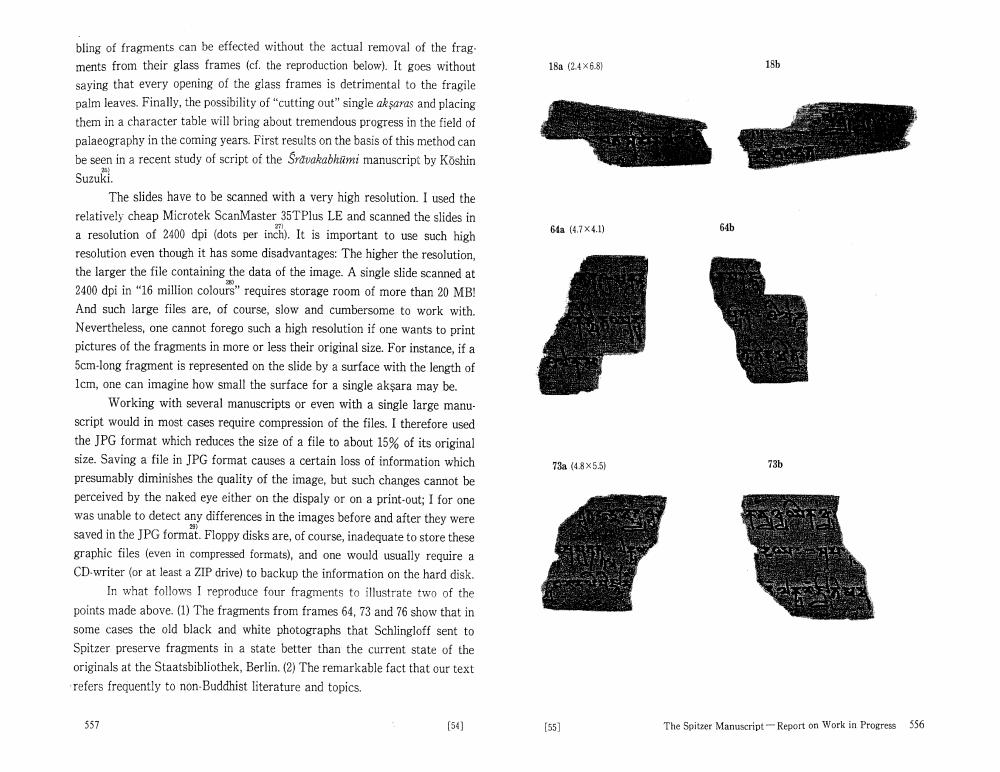Book Title: Spitzer Manuscript Report On Work In Progress Author(s): Eli Franco Publisher: Eli Franco View full book textPage 4
________________ 18a (2.4x6.81 6ta (4.74.1) bling of fragments can be effected without the actual removal of the frag. ments from their glass frames (cf. the reproduction below). It goes without saying that every opening of the glass frames is detrimental to the fragile palm leaves. Finally, the possibility of cutting out" single aksaras and placing them in a character table will bring about tremendous progress in the field of palaeography in the coming years. First results on the basis of this method can be seen in a recent study of script of the Sydvakabhani manuscript by Koshin Suzuki. The slides have to be scanned with a very high resolution. I used the relatively cheap Microtek ScanMaster 35T Plus LE and scanned the slides in a resolution of 2400 dpi (dots per inch). It is important to use such high resolution even though it has some disadvantages: The higher the resolution, the larger the file containing the data of the image. A single slide scanned at 2400 dpi in "16 million colours" requires storage room of more than 20 MB! And such large files are, of course, slow and cumbersome to work with. Nevertheless, one cannot forego such a high resolution if one wants to print pictures of the fragments in more or less their original size. For instance, if a 5cm-long fragment is represented on the slide by a surface with the length of Icm, one can imagine how small the surface for a single aksara may be. Working with several manuscripts or even with a single large manuscript would in most cases require compression of the files. I therefore used the JPG format which reduces the size of a file to about 15% of its original size. Saving a file in JPG format causes a certain loss of information which presumably diminishes the quality of the image, but such changes cannot be perceived by the naked eye either on the dispaly or on a print-out; I for one was unable to detect any differences in the images before and after they were saved in the JPG format. Floppy disks are, of course, inadequate to store these graphic files (even in compressed formats), and one would usually require a CD-writer (or at least a ZIP drive) to backup the information on the hard disk. In what follows I reproduce four fragments to illustrate two of the points made above (1) The fragments from frames 64, 73 and 76 show that in some cases the old black and white photographs that Schlingloff sent to Spitzer preserve fragments in a state better than the current state of the originals at the Staatsbibliothek, Berlin. (2) The remarkable fact that our text refers frequently to non-Buddhist literature and topics. 73a (4.8x5.5) 557 (54 [55] The Spitzer Manuscript - Report on Work in Progress 556Page Navigation
1 2 3 4 5 6 7 8 9 10
